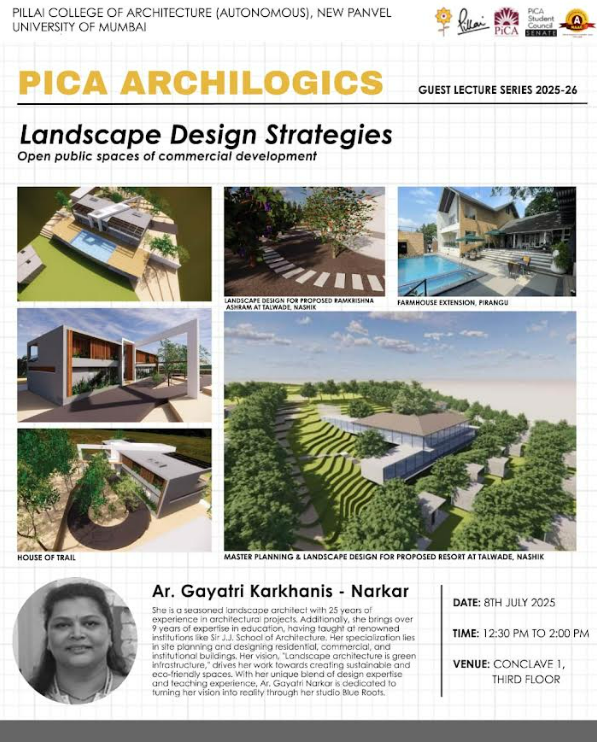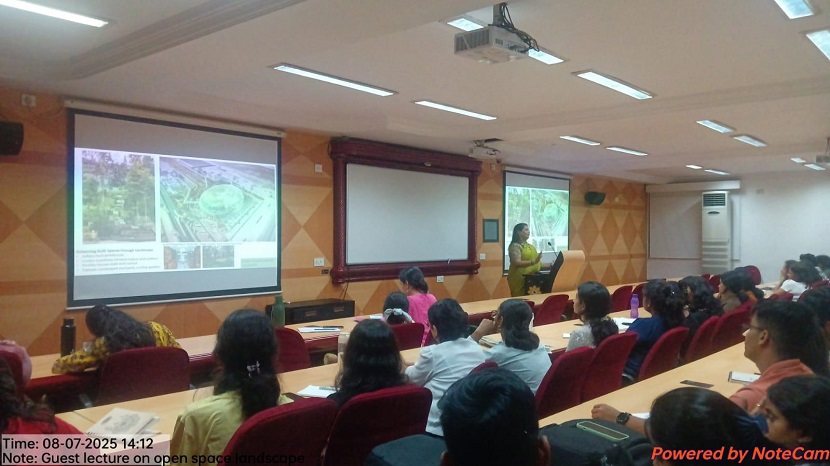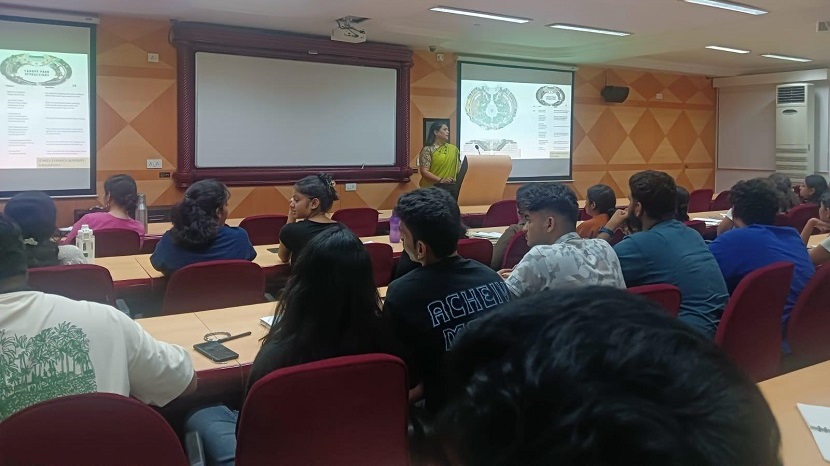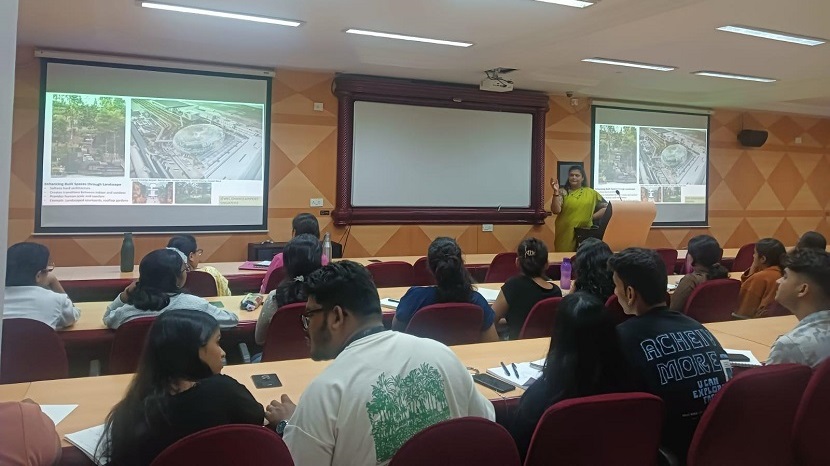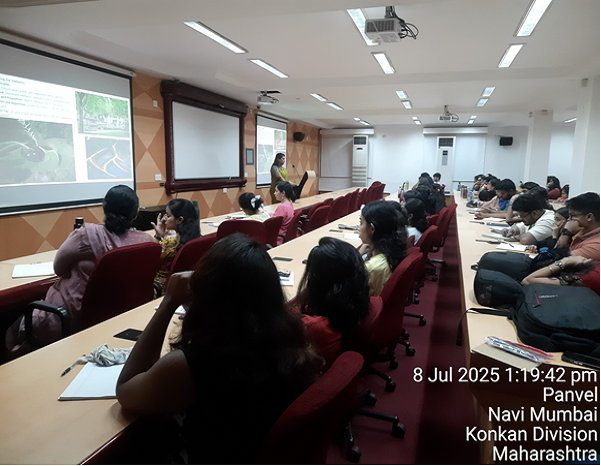| Date | 8th July 2025 |
| Time | 1:00 p.m. - 2:30 p.m. |
| Venue | Conclave 1 |
| Session | 2025-26 |
| Faculty Coordinator | Prof. Harshada Punde |
| Speaker | Ar. Gayatri Narkar |
| No. of Students Participants | 71 |
Aim of this Guest Lecture was to understand how landscape strategies can enhance design of public open spaces. It helped students to understand landscape design aspects in commercial spaces.
Ar. Gayatri Narkar’s lecture on landscape design provided a comprehensive overview of the discipline, emphasizing its multifaceted role in shaping environments that are both functional and aesthetically pleasing.
Core Principles of Landscape Design
Ar. Narkar began by defining landscape design as the art and science of modifying the visible features of an area of land, including landforms, vegetation, water bodies, and structures, to create spaces that are both functional and visually appealing. She highlighted the importance of understanding and respecting the natural contours of the terrain, ensuring that designs harmonize with the existing landscape rather than imposing upon it.
Key elements discussed included:
- Land: The foundational surface upon which all other elements are placed, requiring careful grading and contouring to manage water flow and ensure stability.
- Water: Incorporated through features like fountains, ponds, and rain gardens, water elements not only enhance aesthetic appeal but also contribute to environmental sustainability by managing storm water and supporting local ecosystems.
- Vegetation: The selection of plants, particularly native species, plays a crucial role in supporting biodiversity, providing shade, and reducing the urban heat island effect. Native plants are adapted to local climates and soil conditions, making them more resilient and less resource-intensive.
Design Considerations
The lecture delved into several design considerations that contribute to the success of landscape projects:
- Aesthetic Appeal: Creating visually pleasing environments that evoke positive emotional responses.
- Biodiversity: Designing spaces that support a variety of plant and animal life, contributing to ecological health.
- Sustainability: Implementing practices that conserve resources, reduce waste, and minimize environmental impact.
- Shadow Analysis: Understanding the movement of the sun across a site is crucial for placing elements like seating areas, High Walls and water features to maximize comfort and utility.
- Rain Gardens: Designed to capture and absorb rainwater runoff, these features help manage stormwater, reduce flooding, and support local plant species.
Ar. Narkar also discussed the strategic use of focal points, such as sculptures or distinctive plantings, to draw attention and guide movement within a space. Water features were highlighted for their ability to create ambiance and support local ecosystems.
Global Case Studies
To illustrate these principles in practice, Ar. Narkar presented several international case studies such as Grand Hyatt Singapore, Apple Store Piazza, Italy, Bangkok Mega Mall, Mesa Arts Center, Arizona and Changi jewel, Singapore.
